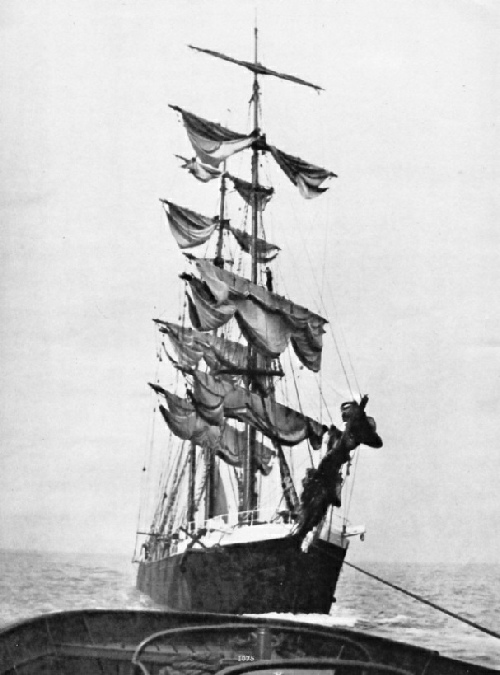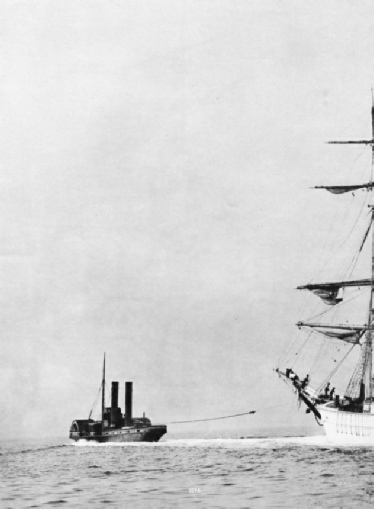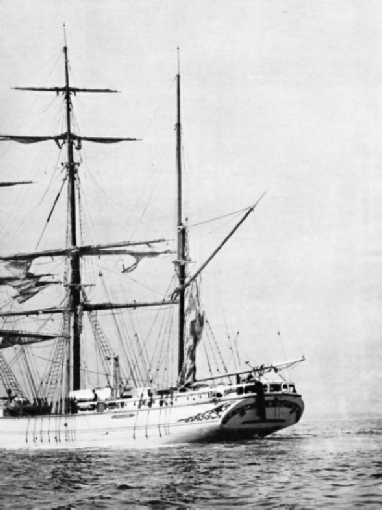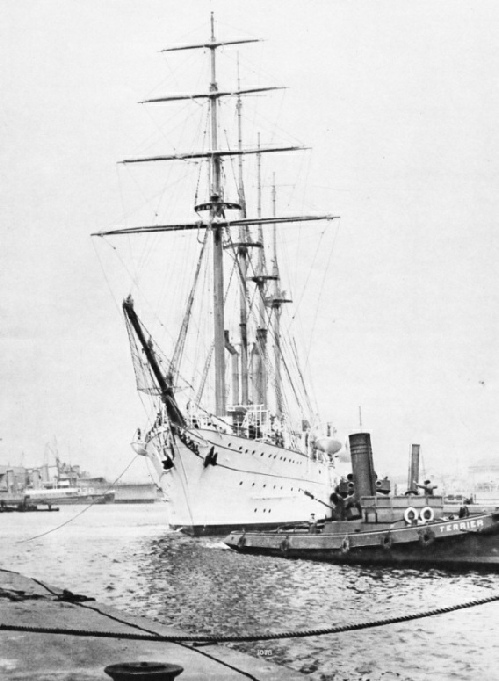
© Shipping Wonders of the World 2012-



Part 34
Part 34 of Shipping Wonders of the World was published on Tuesday 29th September 1936.
It included a centre photogravure supplement featuring sailing ships and tugs, which formed part of an article with the same title.
The Cover
This week’s cover is based on a photograph taken in 1913, and shows the oil tanker F A Tamplin (4,004 tons gross) in a following sea. I am informed that the Chief Steward of the F A Tamplin cured the photographer - then a cabin boy - of sea-sickness one day. He forced the boy to eat every meal and forced him to work hard all one Sunday, when he was in the throes o his malady. By the Monday morning all was well.
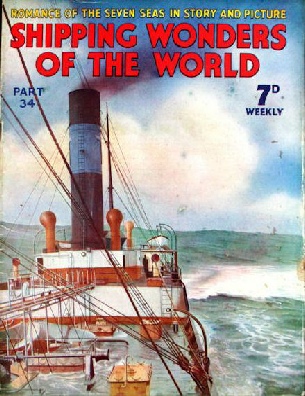
Contents of Part 34
Singapore - Crossroads of the East
Concluding section of this article from part 33.
South African General and Refrigerated Cargo Carrier
A description of the Klipparen, which was completed by the Swedish shipbuilding firm of Götaverken, at Gothenburg, in July 1935. The Transatlantic Steamship Company of Gothenburg owns some of the fastest medium-sized vessels trading between Gothenburg and South and East African ports.
This is the twenty-sixth article in the series on Merchant Ship Types.
From Tudor to Victorian Times
A survey of life at sea in British ships from the close of the Middle Ages to the accession of Queen Victoria. During this period seamanship gradually improved and the men-of-war and merchant ships built up British sea-power and sea-borne trade. This chapter continues the story At Sea in the Middle Ages which appeared in an earlier part.
Sailing Ships and Tugs
For many years the chief function of the steam tug was to tow sailing vessels in and out of port at the end of their long voyages. Competition was keen and the tug skipper had many devices for obtaining business desired by his rivals. This chapter gives a full account of this interesting though little-known aspect of the Sailing Ship era.
Sailing Ships and Tugs (photogravure supplement)
Towing the Ellen
PAST THE TAIL OF THE BANK in the River Clyde, near Greenock, the old paddle tug Flying Huntress tows the Ellen out to sea. The Ellen, 513 tons gross, was built at Grimstad, Norway, in 1893. Her length was 146 ft 8 in, her beam 31 ft 6 in and her depth 14 ft 9 in. The Flying Huntress was an iron vessel with twin funnels, typical of many of her contemporaries. Built at South Shields in 1878, she belonged to the Clyde Shipping Co. As with most tugs, her net tonnage of 40 was considerably smaller than her gross tonnage, which was 177. In a modern tug the net tonnage would probably be nil. She had a length of 122 ft 6 in, a beam of 20 ft 2 in and a depth of 10 ft 7 in.
Contents of Part 34 (continued)
The Göta Canal System
The Suez Canal and the Panama Canal may be regarded as the most important artificial waterways on the earth’s surface. But they are not the only canals of importance. A notable example of an inland seaport is Manchester, connected by the Manchester Ship Canal to the estuary of the Mersey and the Irish Sea. Of the short cuts across countries, we have in the Caledonian Canal an example in our won country. But the longest of these - incidentally one of the longest canals in the world - is the Göta Canal. The natural waterways of Sweden have been linked by the Trollhätte, Göta and Södertälje (Södertälje) Canals to form a route across the country from the port of Gothenburg, on the Kattegat, to Stockholm, the capital of Sweden. This chapter is the eleventh article in the series on World Waterways.
How the Marine Turbine Works
The modern marine steam turbine has been developed from the two main principles, reaction type and impulse type, invented respectively by Hero of Alexandria about AD 50 and by Giovanni Branca in 1629.
The Adventures of Captain Voss
A search for the Cocos Island treasure, a journey across three oceans in a dug-out Indian canoe and the capsizing of a yawl in a China Seas typhoon were among the adventures that
Captain Voss experienced on his remarkable voyage.
This chapter is the seventh article in the series Great Voyages in Little Ships. It is concluded in part 35.
Sailing Ships and Tugs Photogravure Supplement
SHORT ROPE FOR RIVER WORK. Taken from the stern of a tug, this photograph shows the short tow rope used for bringing the Oaklands up the River Thames. A barque of 1,003 tons gross, the Oaklands was built at Dundee in 1876. She had a length of 200 ft 9 in, a beam of 34 ft 1 in and a depth of 19 ft 5in.
The Tug Terrier
SHEPHERDED TO HER BERTH by the tug Terrier at Chatham. The new Brazilian training ship Almirante Saldanha spent several weeks at Chatham in 1936. Built by Vickers-Armstrongs in 1933, she has a displacement of 3,325 tons. She is a four-masted barquentine, with a length of 305 feet, and is fitted with a six-cylinder diesel engine of 1,400 horse-power.
(Page 1078)
